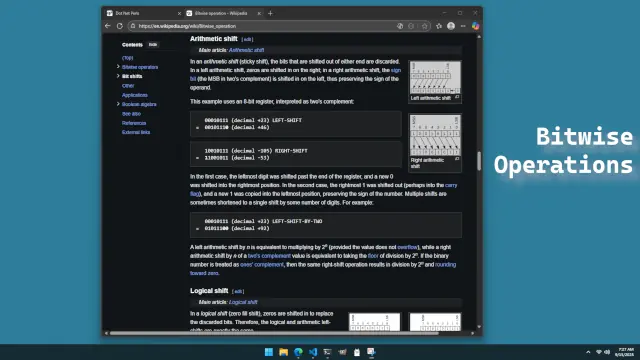Practical Use of Bitwise Operations
A lot of programming is mundane—developers may spend a lot of time reading in files, using strings, writing files, and then doing the same thing over again. Occasionally though there is cause for using more advanced approaches like bitwise operations.

Bitwise operations are at their core a way to handle data using bits directly. A boolean value (true or false) can be encoded as a single bit. Most languages have bitwise operators, which look similar to the operators we use in if-statements to test conditions.
In my experience, it is useful to know how to use bitwise operators, but to use them in actual programs, using a library—or at the minimum a group of separate methods—is almost always beneficial. It is easier to use a method called Set with some arguments, than to use a shift and bitwise "and" or "or."
When using a language, consider trying to find a useful library for bitwise operations. And if this doesn't work, create a reusable group of methods that handle the bitwise operations and provide names that are easy to remember (like set or get).